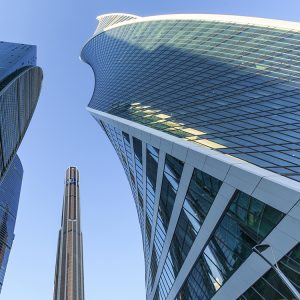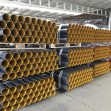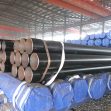How to look at curtain wall construction today
What is Curtain Wall?
Curtain wall is a freestanding exterior wall covering that is sometimes used for commercial buildings to have a pretty look of being made of top-to-bottom glass. Beyond aesthetics, they’re meant to protect the building against air and water penetration. In practical applications, curtain wall systems are typically non-structural with an aluminum frame, which is then filled with either glass or metal panels. Glass curtain walls, in particular, are popular because they let a lot of natural light filter through the interior of the building.

These days, as curtain wall design can often be regarded as part of modern buildings, we’d better have a comprehensive understanding of curtain wall in applications.
What are the advantages of curtain walls?
There are many advantages to choosing a curtain-wall system as your building’s envelope as follows:
1. They’re great at keeping out air and water
Curtain wall systems are known for their ability to keep out air and water infiltration. They have fewer mullion, the structural element that forms a division between each glass panel, especially compared to window-wall systems. Since the curtain-wall system has fewer structural parts, there is less of a chance that the elements will penetrate it.
2. They can reduce building sway
In tall buildings, building sway can be uncomfortable for inhabitants to endure. Curtain walls structure help reduce sway by dispersing kinetic force throughout the entire frame, which also makes it safer.
3. They’re more energy efficient
In particular, a properly glazed curtain wall will improve the thermal efficiency of a building and will cut down on operating costs. In addition, exterior glazed systems work by cutting down on the amount of UV light that can penetrate into the building’s interior.
What are the disadvantages of curtain walls?
As everything has two sides, curtain walls do have some disadvantages compared to other wall systems. You’ll have to take these disadvantages into account as you weigh your decision, so you’ll know for sure if a curtain wall is right for you.
1. Curtain wall cost is much more than window walls
The main disadvantage of curtain walls is that their construction and maintenance cost more than another wall system. And especially during the construction phase, they require more glass and aluminum to construct than a window-wall system, which is achieved by simply placing glazing between each floor slab in a building. Furthermore, the glass and aluminum can become vulnerable to rust and mineral deposits over time, which means regular maintenance is required.
2. They’re harder to install
Curtain walls are installed from the exterior, which means that their installation can be delayed by unfavorable weather conditions. In contrast, a window-wall system is installed from the interior of the building. This type of installation can often be done more quickly and cheaply.
In a word, curtain walls do have many advantages, especially if your main goal is to have the building be safe and energy efficient in spite of a higher cost in construction. If you’re considering a curtain wall as your building envelope, carefully weigh the pros and cons so that you can figure out if this design element is the right choice for your next construction project.
Tel: +86 18202256900 Email: steel@fwssteel.com










